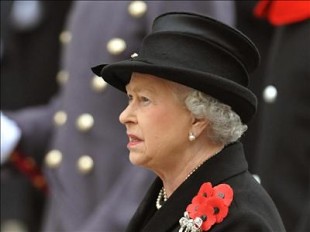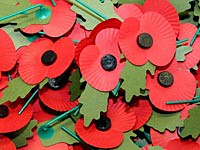Remembrance Day was originally conceived as a commemoration of the war dead of the First World War but after the Second World War, the scope of the ceremony was extended to focus on the nation's dead of both World Wars. In 1980, the commemoration was widened once again to extend the remembrance to all who have suffered and died in conflict in the service of the UK and all those who mourn them.
The service at the Cenotaph at Whitehall is designed to ensure that no one is forgotten. A wreath of red poppies is laid on the monument by The Queen and the other tributes placed on the Cenotaph are dedicated to all who have suffered or died in war.

Members of the Cabinet, Opposition Party leaders, former Prime Ministers and certain other Ministers and the Mayor of London are also invited to attend the ceremony, along with representatives of the Armed Forces, Merchant Air and Navy and Fishing Fleets, and members of faith communities. High Commissioners from Commonwealth countries also attend the ceremony and lay wreaths at the Cenotaph.
At today’s service, the Queen stood solemnly at 11 o'clock as the nation marked a two-minute silence in memory of those who have perished defending the country. After a cannon marked the end of the silence, the monarch approached the Cenotaph, laying a wreath and pausing for a moment's reflection before joining family members.
For a couple of weeks leading up to Remembrance Day, UK citizens wear red poppy lapel pins as a sympbol of remembrance (see the Queen's photo above).



No comments:
Post a Comment